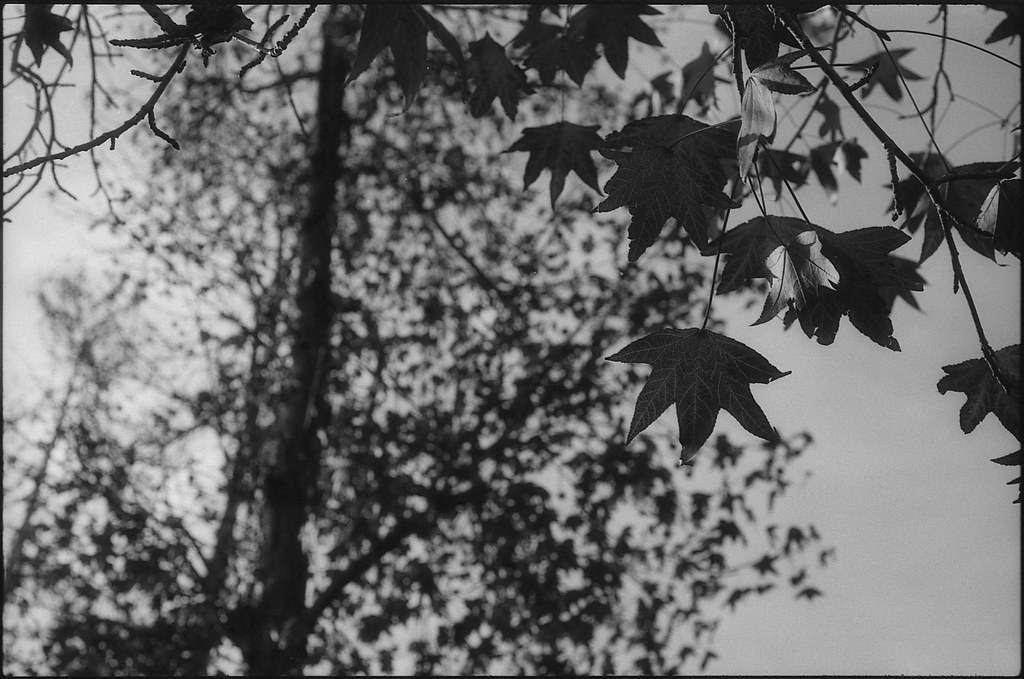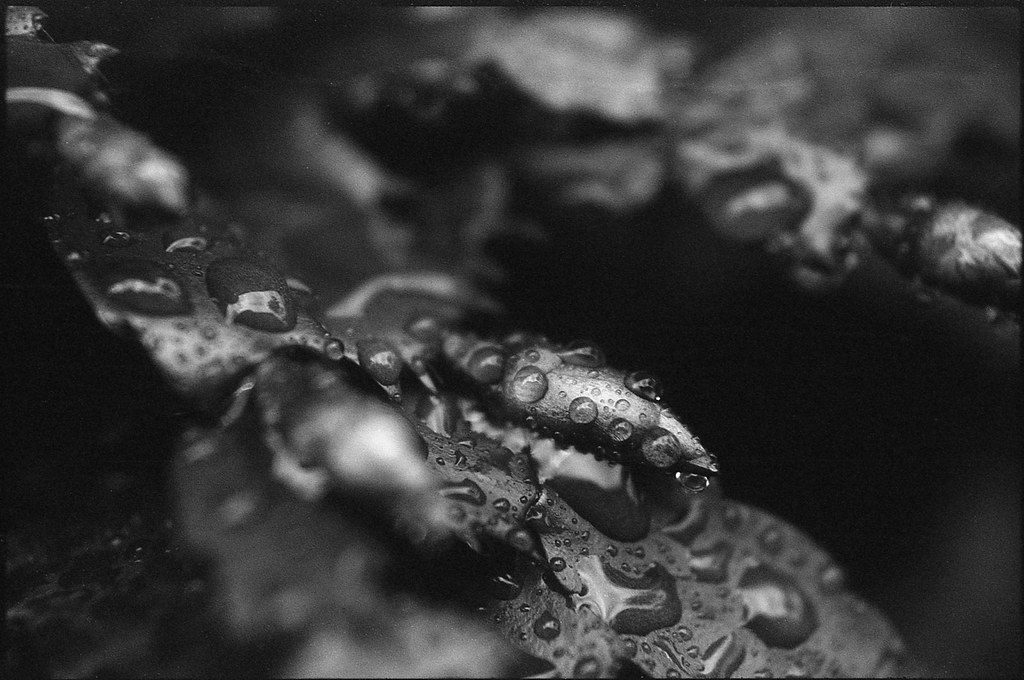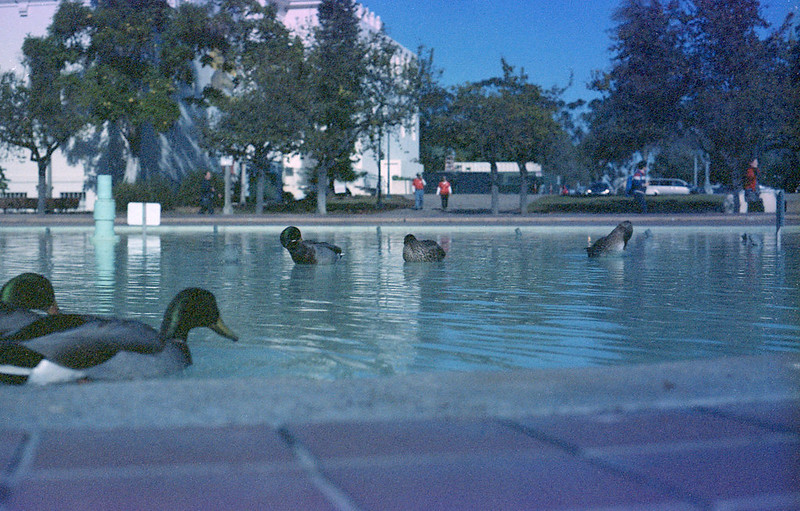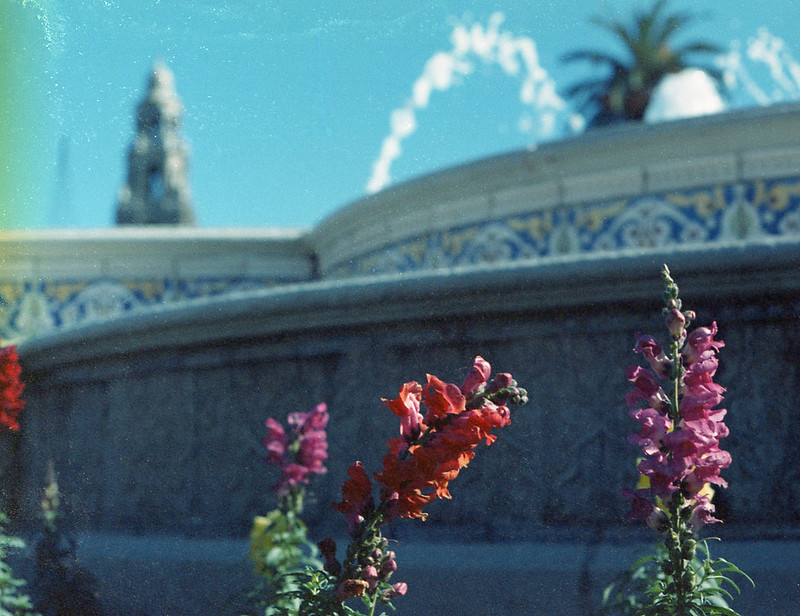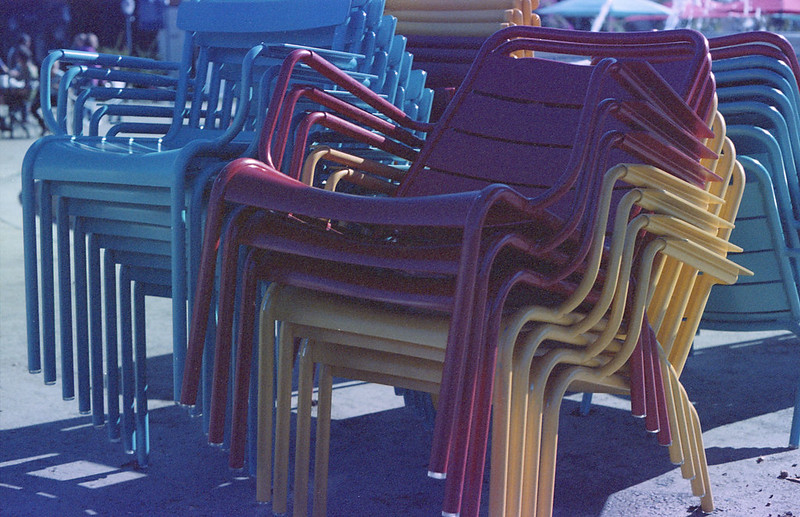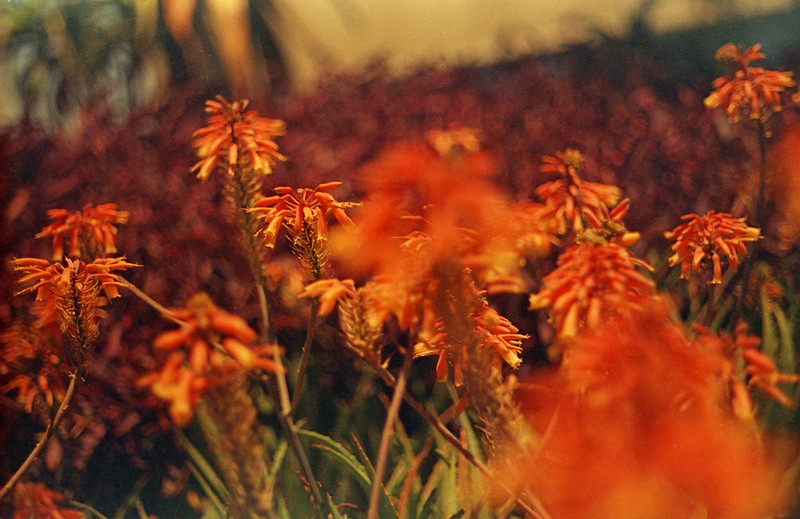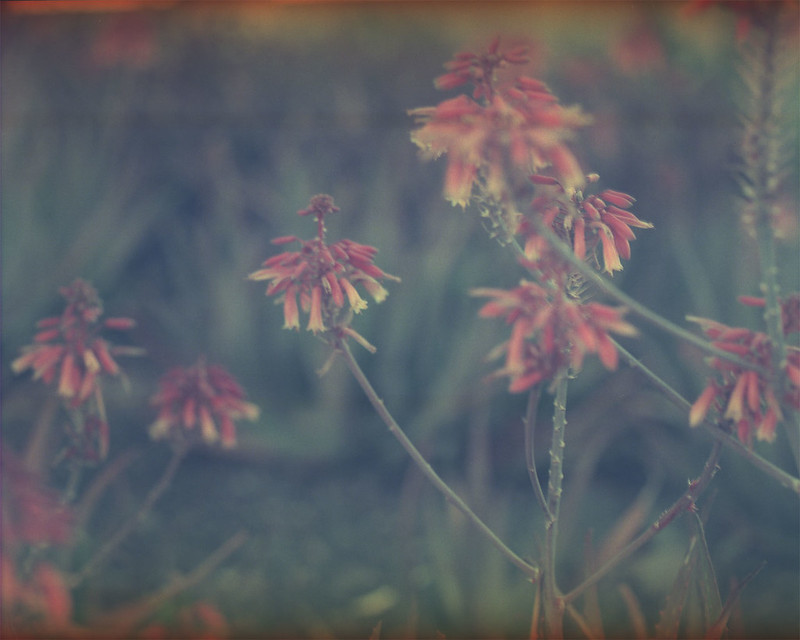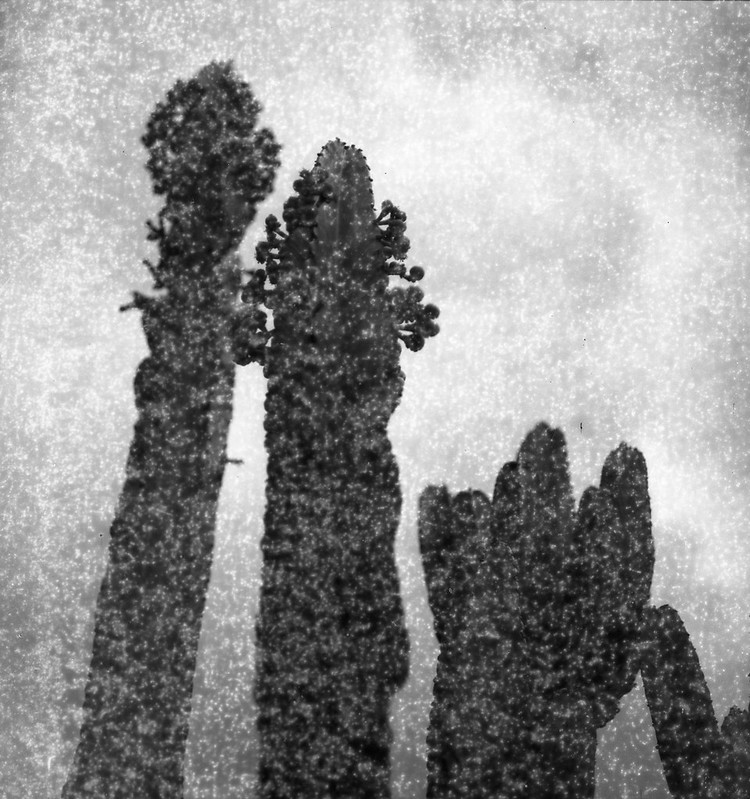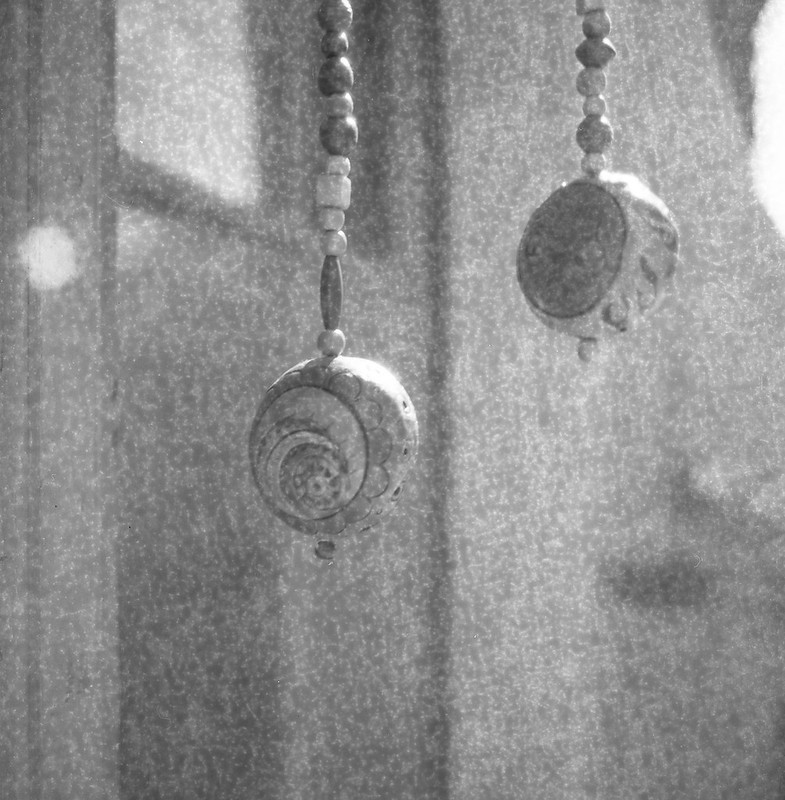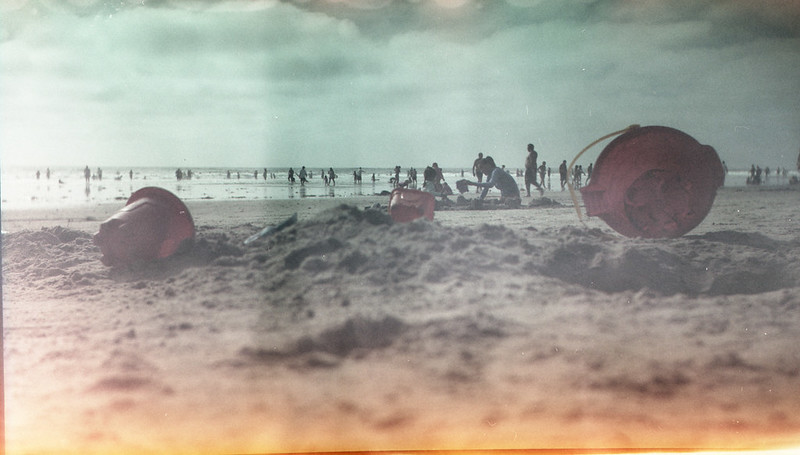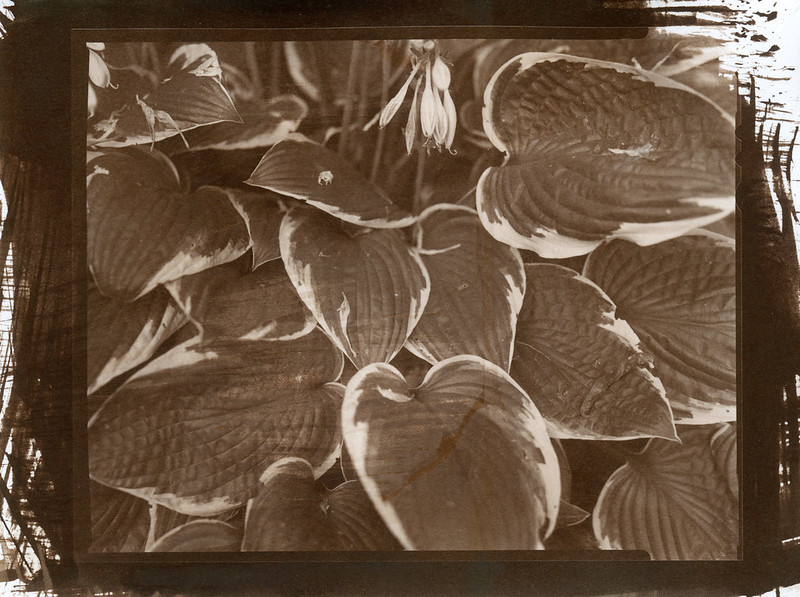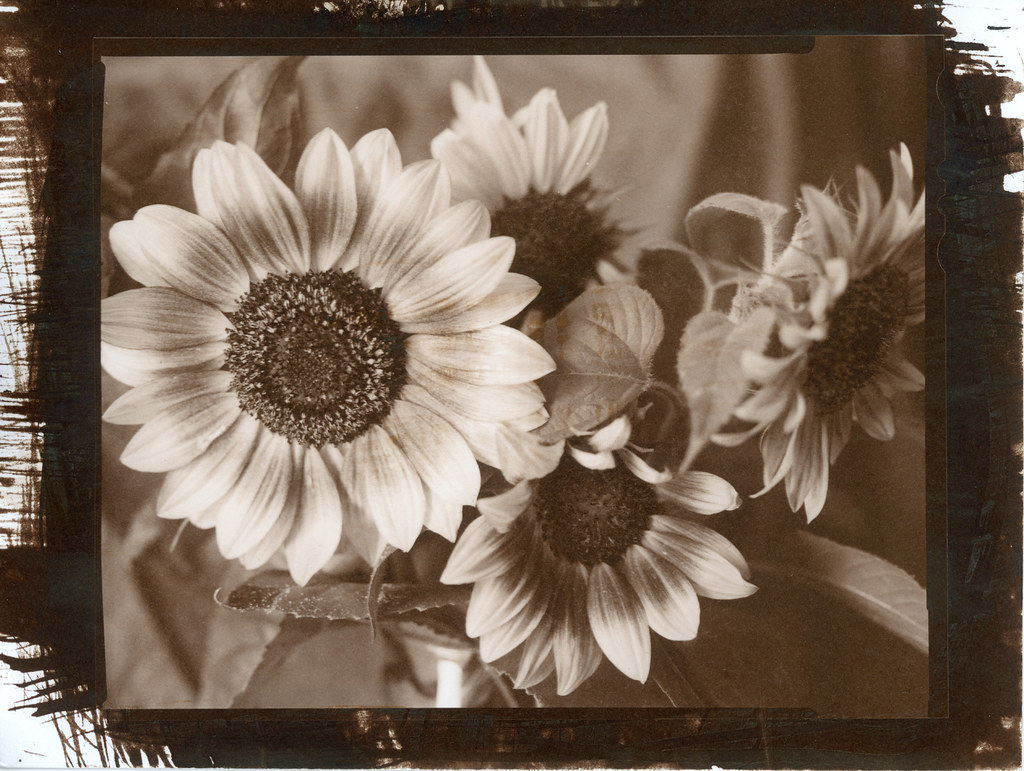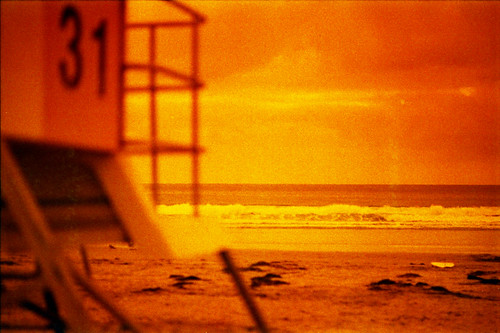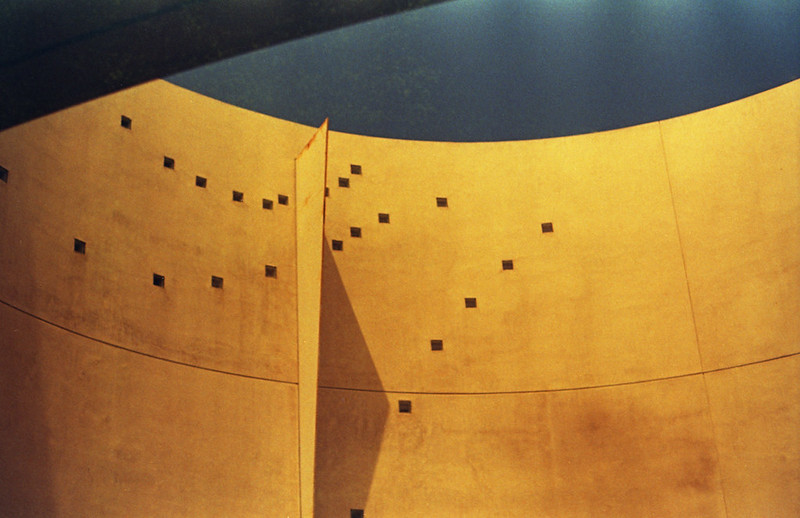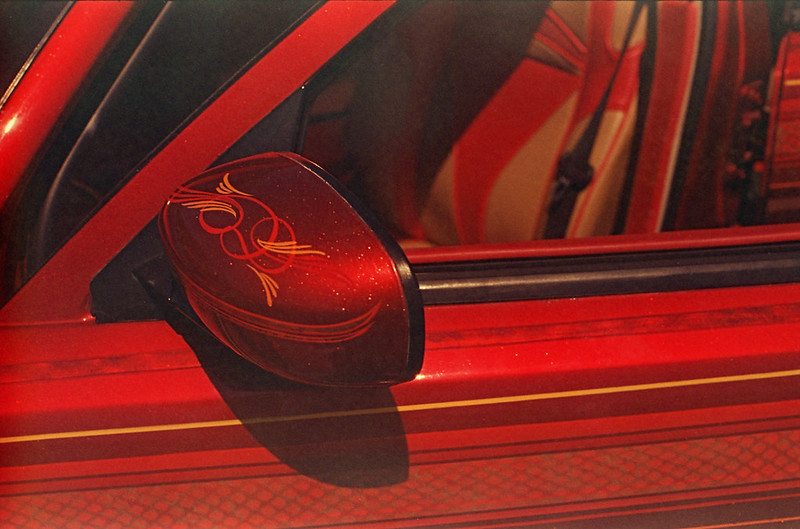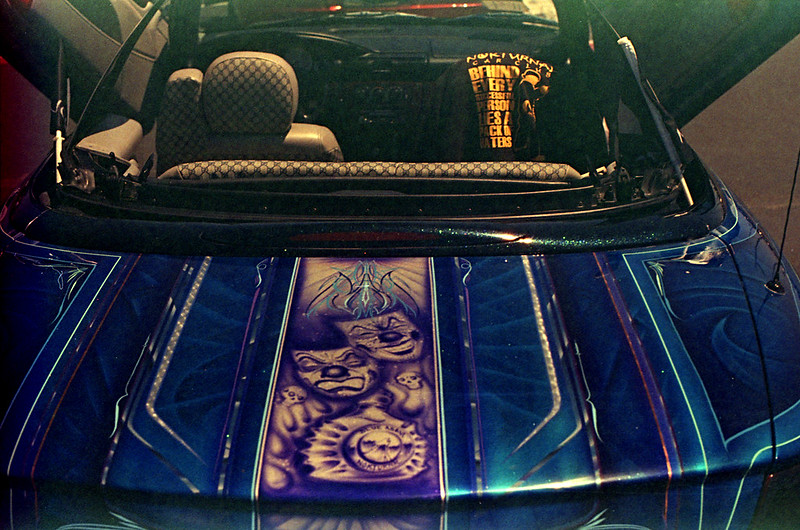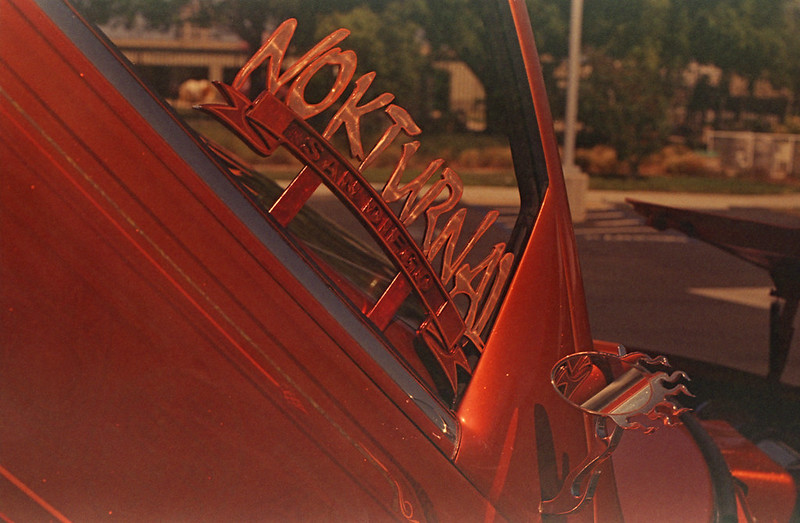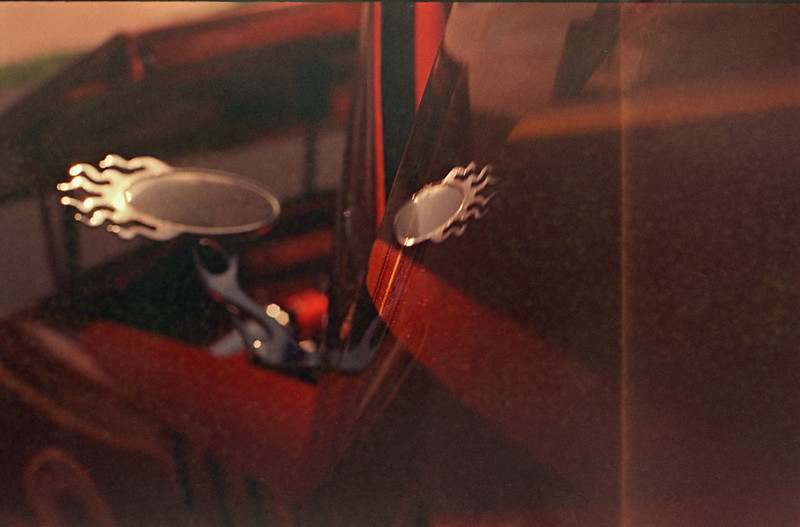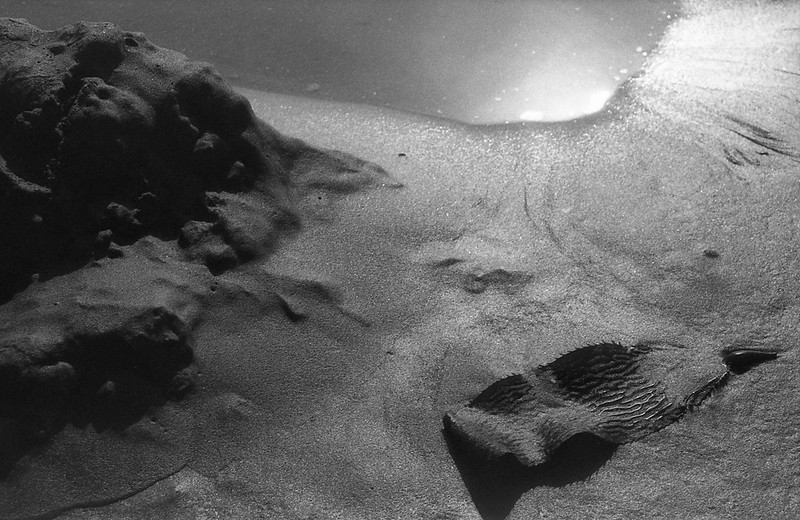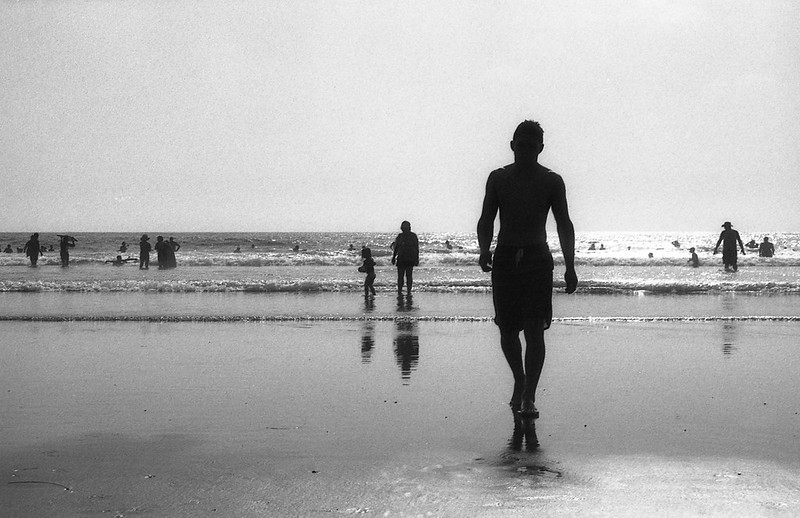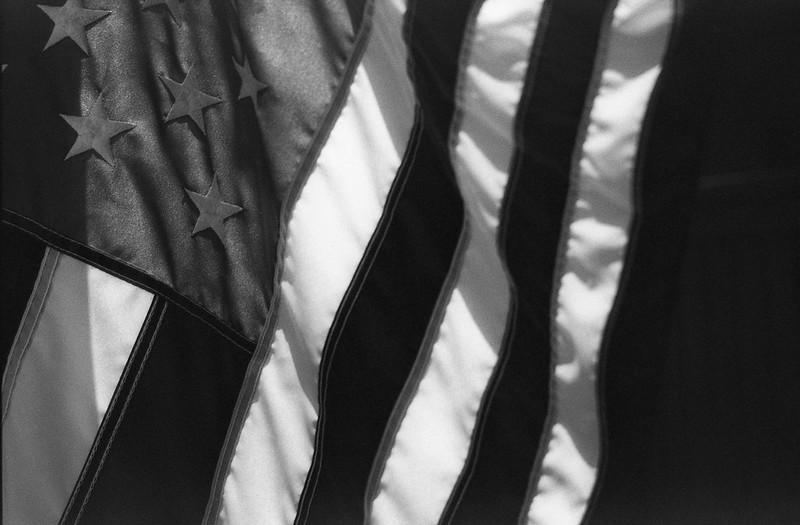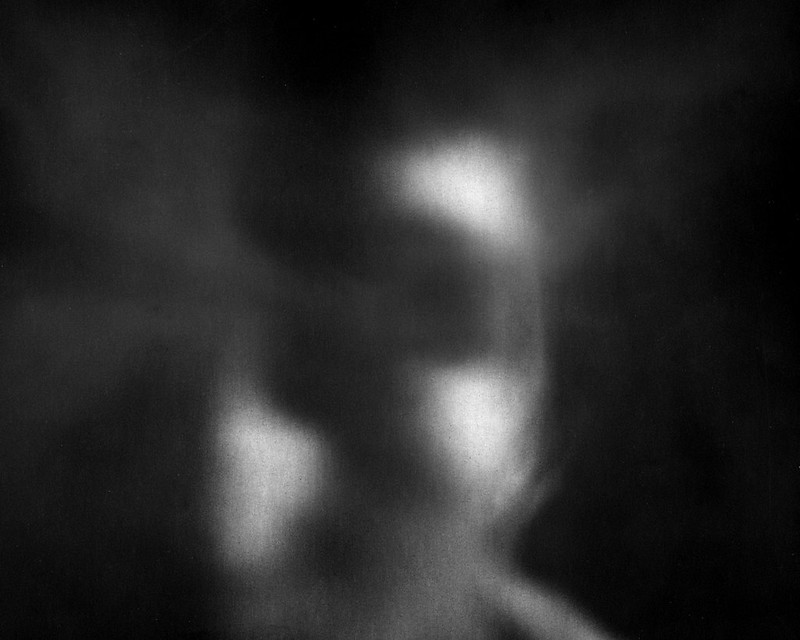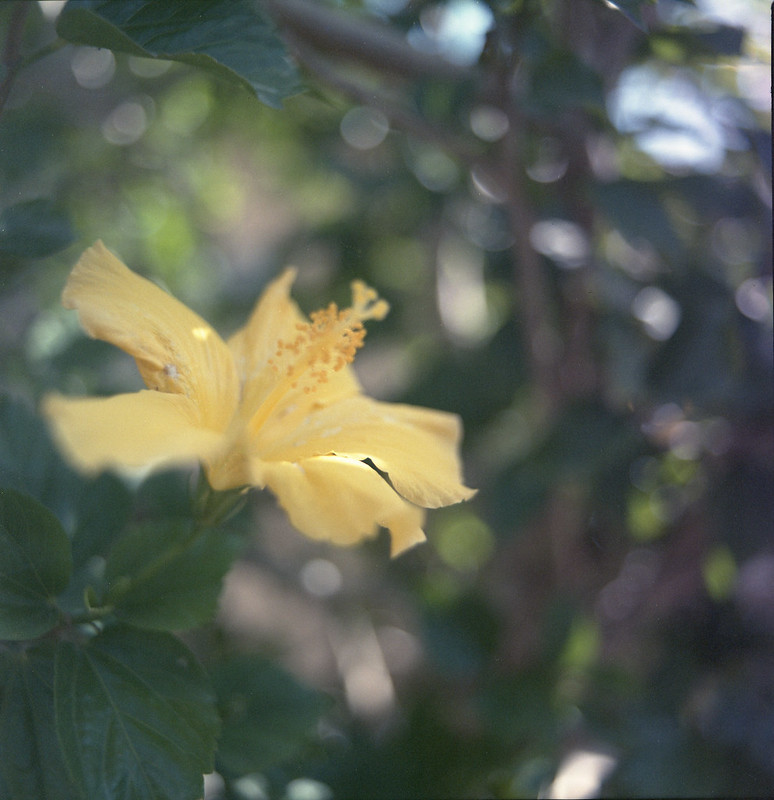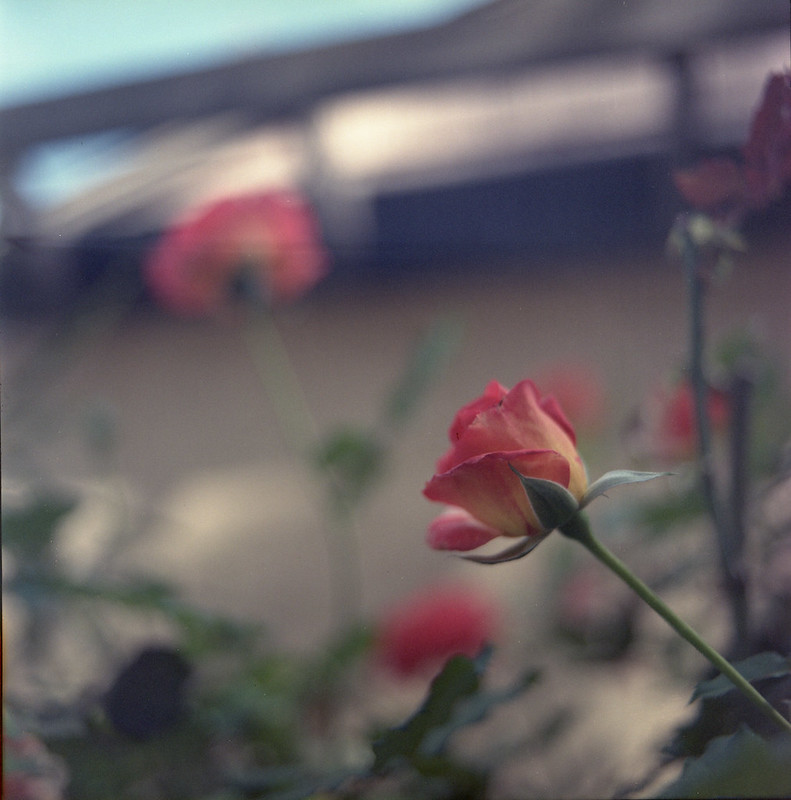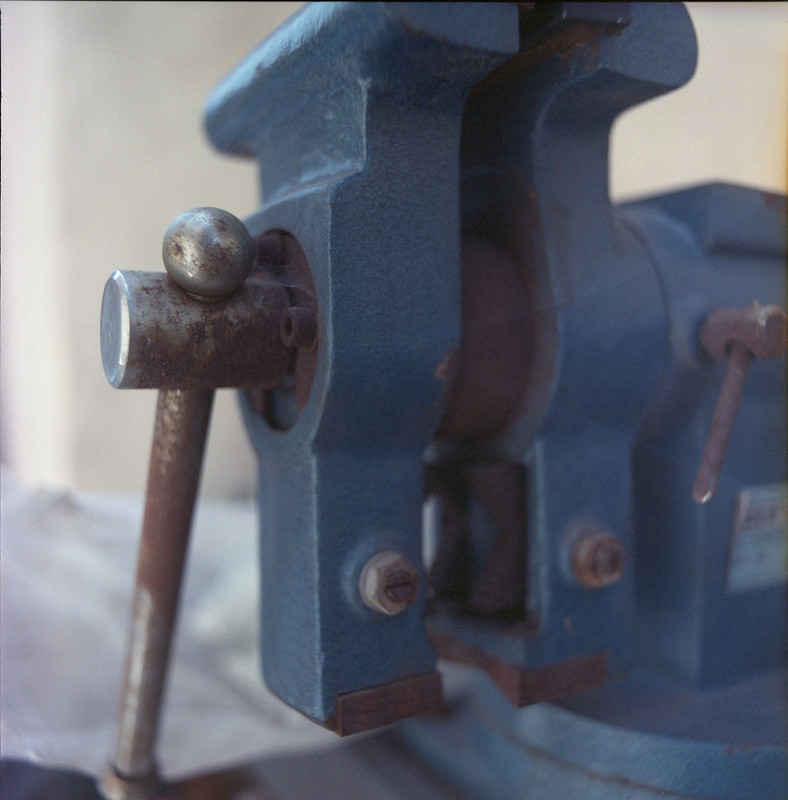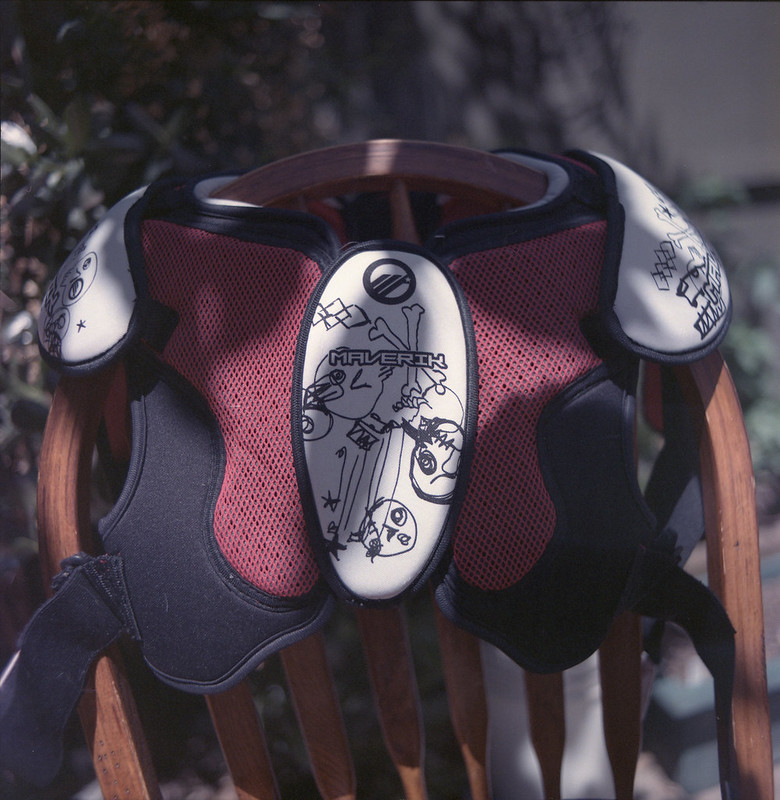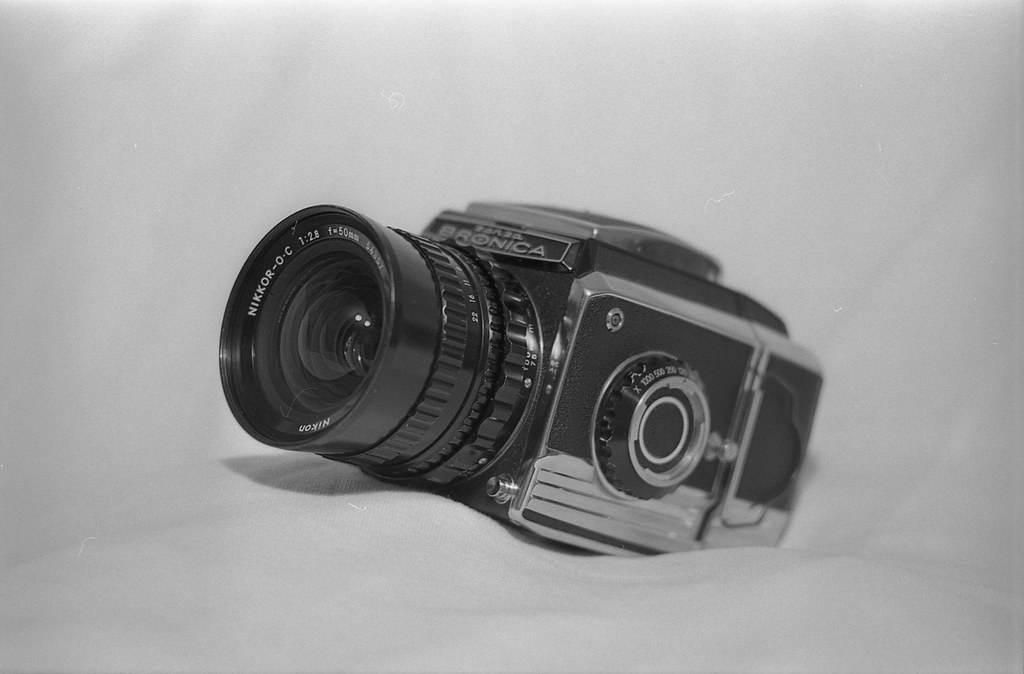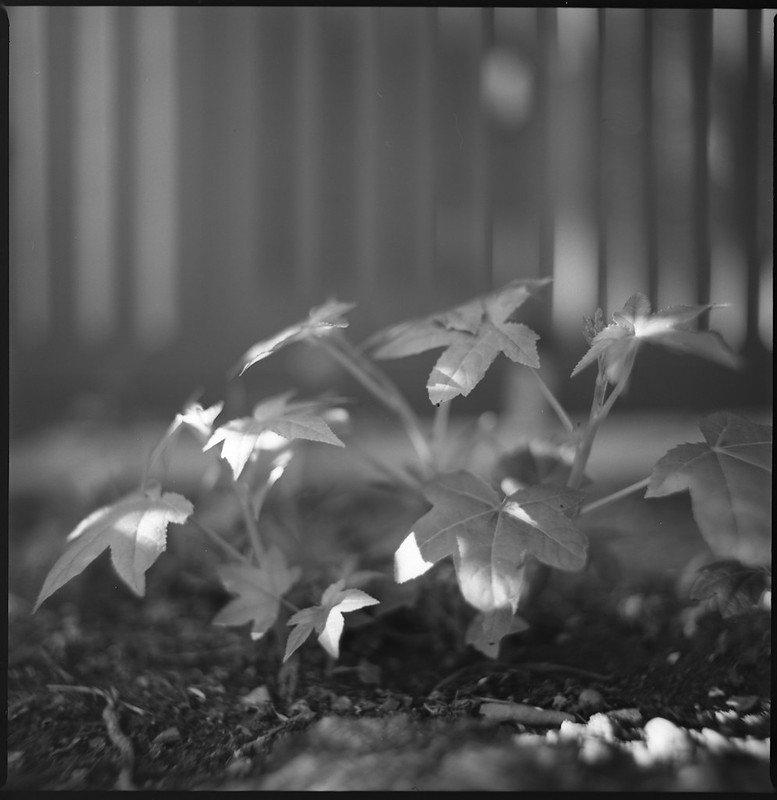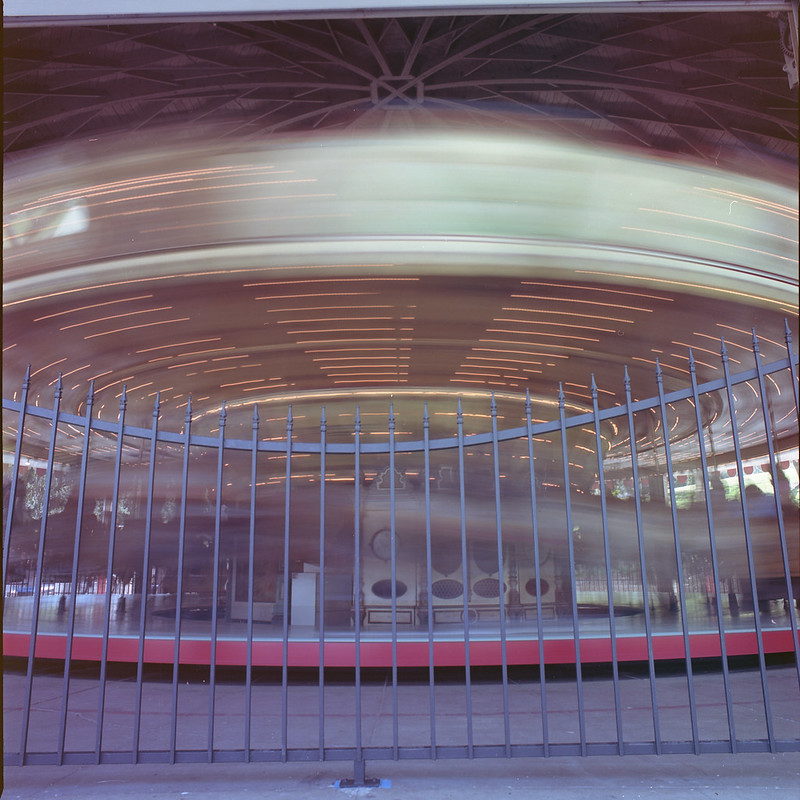I am in the habit of saving the spools and backing papers from the 120 film I use. I keep thinking, "At some point these will be useful somehow." You know, typical pack rat mentality. I have long wanted to reuse them for their intended purpose and reload 120 film from bulk rolls. Sadly, it seems that I might be the only one. The film manufacturers just don't make bulk rolls of 6 cm film stock. So recently, while poking around the analog photography corners of the big auction sites, I found a bulk roll of 70 mm Vericolor III. It was cheap because the current owner didn't know how it had been stored. It was unopened IOB and marked expired in 5/89. Twenty-five years is not too old for film kept refrigerated, but kept in a So. Cal. closet, 25 years can be pretty damaging. Ah well, it was cheap (about 35¢/ft = <$1/roll). So I am set for rolling 616/116 rolls (though I need to get my hands on some backing papers), but I'm ~1cm too wide for 120. What I need is commonly called a film slitter. These are common among the sub-mini shooters who need to cut 35mm film lengthwise to fit their tiny format cameras. However, they are not so common for the medium formats. Being me, I figured "How hard can it be?" and drew a couple of little sketches to see what I thought might be feasible. For me though, the design work really starts happening when I sit down with a cutting mat, some foam core and an exacto knife.

Here is a list of the materials I ended up using:
- Black Foam Core
- Self-adhesive Flocking Material
- Single-edged Razor Blade
- Steel Ruler
- School Glue
- Thick Tape (Gorilla Tape)
The following is just my experience. I am not suggesting that you do this. Razors are sharp and you can get cut if you are not careful. Please don't sue me if you cut yourself or ruin a bunch of film. I am not liable for anything bad that happens as a result of anyone following these steps.
First, I made the film channel. I did this by cutting and gluing a foam core 'sandwich' with two narrow pieces on either end to create the gap and a 70mm wide channel through the middle. If I made another, I might make this with thinner material in the middle, but as it is, the thickness makes a good amount of material to hold the razor blade. I lined the channel with the camera flocking material. In my mind, it seems like this will help prevent scratches as the film passes through. In practice, it might just hold dust and stuff that will make the scratches worse. We'll see.

Next, I measured off 61mm and cut a slit in which to insert the razor. I could make other slits for different formats like 127, but maybe on the next one. I figured inserting it at an angle would increase the cutting efficiency and give more surface area for the razor to 'grip'. I don't want to glue this in as I would like to be able to change the razor if it gets dull. There was still a good amount of the razor exposed, so I used the Gorilla Tape to cover the sharp edge. Obviously, having an exposed razor in the dark is a bad idea.

Finally, I figured it would be good to have another channel to feed the backing paper through since it needs to line up with the film while I roll it onto the spool. I cut another piece of foam core to the width of the slitter and instead of using foam core pieces to make the channel, I just rolled up some Gorilla Tape and used that. This makes a narrower chamber and the paper slide through nice and straight. Here is a shot of it ready to go into the dark room. The film will be feeding through the top channel, emulsion side up. I put a crease in the backing paper where the film should start. In the dark, I just line up the end of the film with that crease and start rolling. There is another crease at the other end where the film gets taped down.

In the dark, I got the film out of the can and put the spool back into the cardboard box it came in so that the emulsion was up as I pulled the film out. I then started feeding the film into the top channel of the slitter. It wouldn't start cutting. After a few false starts, I decided I had to cut some off and try in the light. So I cut about 10" and put the spool back in the can, and put the can back in the box. In the light, I had no better luck. I thought the razor would just cut through that film like a hot knife through Justin Bieber's face, but it would not start. So I cut a little notch 1cm from the edge and tried again. Success!! It pulled through trimming a perfect 1cm strip from the edge of the film. So that's the trick. I have to start a cut 1cm from the edge in the dark. I cut a little strip of thin cardboard from a cereal box 1cm x ~6cm. This would be my guide. In the dark, I held the guide even with the long edge of the film and made a cut with a pair of scissors. Then I fed the film into the slitter and pulled the edge through so that it was even with the crease in the paper. Then I would pull a few inches through and roll it up, pull, roll, pull roll. All the time I was feeling for the final crease. That is where I would cut the film. I figured if I want to do another 120, then I would cut the film on the near side of the slitter, leaving the 'start' for next time. If I want to do a 116 next, I would cut the film on the far side, leaving the full 70mm width with no starting cut.
I loaded this 120 roll up into my Bronica S2a (article on that camera to come) and went out to test it and see if it at least fed through the camera normally. Twelve shots came off without a hitch. I suppose I could roll 220, but I would have to devise a way to measure the length in the dark. Not impossible, but probably not worth it since I don't really like 220. I will post some of the pictures if the film turns out to be any good. Feel free to post any questions or comments about this slitter or one that you have made. I am eager to improve the design.

